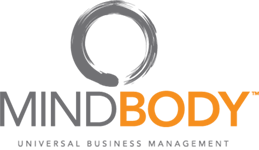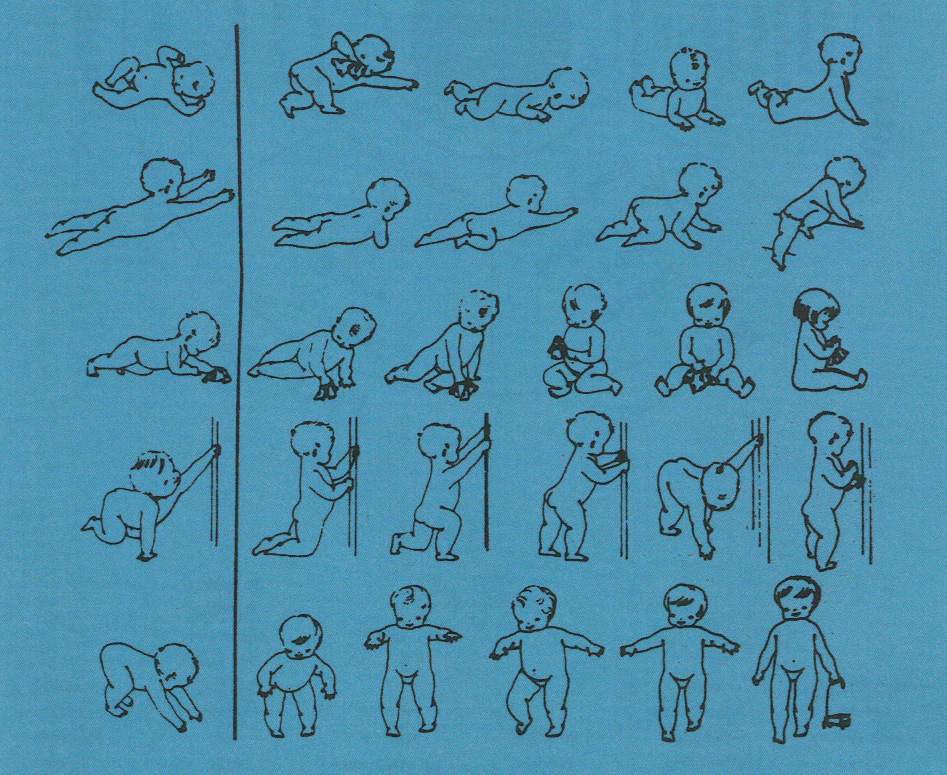Movement - Infant Development
How our posture develops in utero to 12 months of age
Infant development movement patterns gives way to how individuals move and function later in life. All of these movements are in preparation to core function for spinal stability. If a stage is skipped, the child will develop improper movement patterns or can cause a weakening to the spine due to lack of stimulation.
- In utero, the twist pattern is first developed under normal circumstances. If a mother does not move very much, they unborn child is not stimulated to move either. The child is also learning to sense environment through perceived stress of the mother. When the mother is at ease, the child is lucid and free to move. When the mother is under stress, the child goes into fight or flight just like the mother. This can mean that the child locks up just as an adult would with tension built up. Brain development also takes its course as well in this stage where the child can be brought up in a loving environment and grow the prefrontal cortex substantially more than that of a child brought into a world of stress or a fear environment. You can read more about that in any of Joseph Chilton Pearse books.
- Birth to 3 months, Push patterns begin. This is the child's first NO to the world. Pushing themselves away from the ground to understand that they are not the ground and a separate person.
- 3-5 months is the Pull pattern. This is the child's first yes or inclusion of the world (Reaching out for objects and drawing them towards themselves). It also distinguishes an "upper" and "lower" body to the child.
- 5-8 months is the bend pattern. This pattern involves a homolateral pattern of using same side upper body with lower body to move. This is beginning stage of salamander position. This position will lead the child into propelling them into using their core off the ground. I have placed Pilates and Yoga instructors in this position and watched as they struggled because the skipped this stage during their development. It's a very humbling experience if you are an avid exerciser.
- 7-11 months the Squat and Lunge is perfected. By combining all the previous movements together, the child can now reach for objects for support, pull on them, bend their body to adequately either squat them or lunge them upright. At this point the child is standing on their own and learning the mechanics of sitting, stabilizing, bear walking (hands and feet), and connecting left to right side of the body in unisyn.
- 12 months is Gait. Gait is the natural progression that involves arm swinging opposite arm to leg patterning which creates a balanced stride. This gives the child a "destination" after they have learned to say "no", "yes", adapting homolateral patterns, and contralateral patterns. This intricate movement is one of the most complicated neurological patterns you can do with the human body and yet we all take it for granted. The nervous system has been prepped for this stage in utero through the entire first year of life.
We can see when someone skipped a particular stage of infant development because they can not do certain movement patterns or they have difficulty performing them. Most of our rehabilitation performed on our clients begins with identifying which stage was skipped and working hard to learn those missing patterns. Some clients call it miraculous with how it completely changes their posture even after a single set of the missing primal pattern.
Your best personal training professionals in Chatham, Livingston, Madison, and Summit, Short Hills, Millburn, Springfield, New Providence, Florham Park, Woodland Park, Mountainside, Berkeley Heights, Convent Station, Maplewood, and various parts of Union, Morris and Essex County, NJ (New Jersey). We have personal trainers that suit every need.
- Administrator's blog
- Log in to post comments


